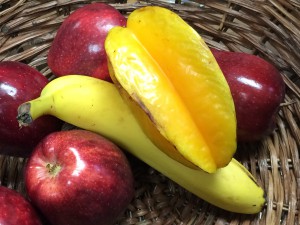Goodness, it is freezing cold in most parts of the country and Florida is gearing up for a record breaking harvest season!
According to the Florida Department of Agriculture and Consumer Services (FDACS) Florida commercial farms rank second in the U.S. for value of vegetable production; first in production value for oranges (accounts for 63 percent of total U.S. citrus production), fresh market tomatoes, watermelons, grapefruit, fresh market snap beans, fresh market cucumbers and squash; second in the production of greenhouse and nursery products, bell peppers, strawberries, fresh market sweet corn, spring potatoes, tangerines and avocados. Florida ranks eighth in agricultural exports with over $4 billion in receipts.
It may be winter but wintertime in Florida is an incredible season for Florida agriculture. Look for these “Fresh From Florida” items in your grocery store during January: avocado, bell pepper, broccoli, cabbage carambola, cauliflower, celery, eggplant, grapefruit, guava, lettuce, mushroom, orange, passion fruit, peanut, radish, sap bean, squash, strawberry, sweet corn, tangerine, tomato.
http://www.freshfromflorida.com/content/download/16793/269910/01January.pdf
And why not try something new?
According to the Tropical Fruit Growers of South Florida carambola, commonly known as a starfruit is just getting started and will continue into February. These lightly sweet fruits are crisp, juicy and perfect for adding to meals and desserts as well as for just snacking on.
If you purchase a carambola buy one with little or no bruising or brown spots on the ribs. Starfruit that is ready to eat is gold in color. If you can wait a few days, select a starfruit that is a light yellow, with a hint of green along the ribs because carambola that is yellow or a very light green will ripen on the counter at room temperature. (Don’t place it in the refrigerator as this will stop the ripening process.) Once the carambola is ripe, wash the fruit and then cut it crosswise to reveal its beautiful star pattern. The skin, the seeds and core are all edible, and delicious!
Ripe carambola can be stored in the refrigerator; it will keep for almost a week. Be aware that a frozen carambola will change consistency when thawed but can be successfully added to a smoothie along with other fruit.
Carambolas are a nutritious, low calorie fruit, and are a great addition to healthy meals and snacks. Try one!
Try this easy recipe found the Tropical Fruit Growers of South Florida website. http://www.tfgsf.com/?page_id=545
Carambola and Lettuce Salad
1 head of Romaine Lettuce, washed and dried
2 large or 3 medium Carambolas sliced in their beautiful star patterns
2 T Balsamic Vinegar
4 T olive oil
2 T chopped mint
Salt and pepper to taste
On a large plate fan out the lettuce leaves, going all the way around making a ring and making a second layer if needed. (Larger leaves first and smaller ones subsequently) Lay the carambola slices in the center.
Combine the vinegar, olive oil, chopped mint, salt and pepper and drizzle over the salad.
Serves four
- It’s Chestnut Season! - December 16, 2022
- Persimmons: Food of the Gods - November 23, 2022
- Have You Ever Thought About Entering Baked Goods in the North Florida Fair? - October 28, 2022

